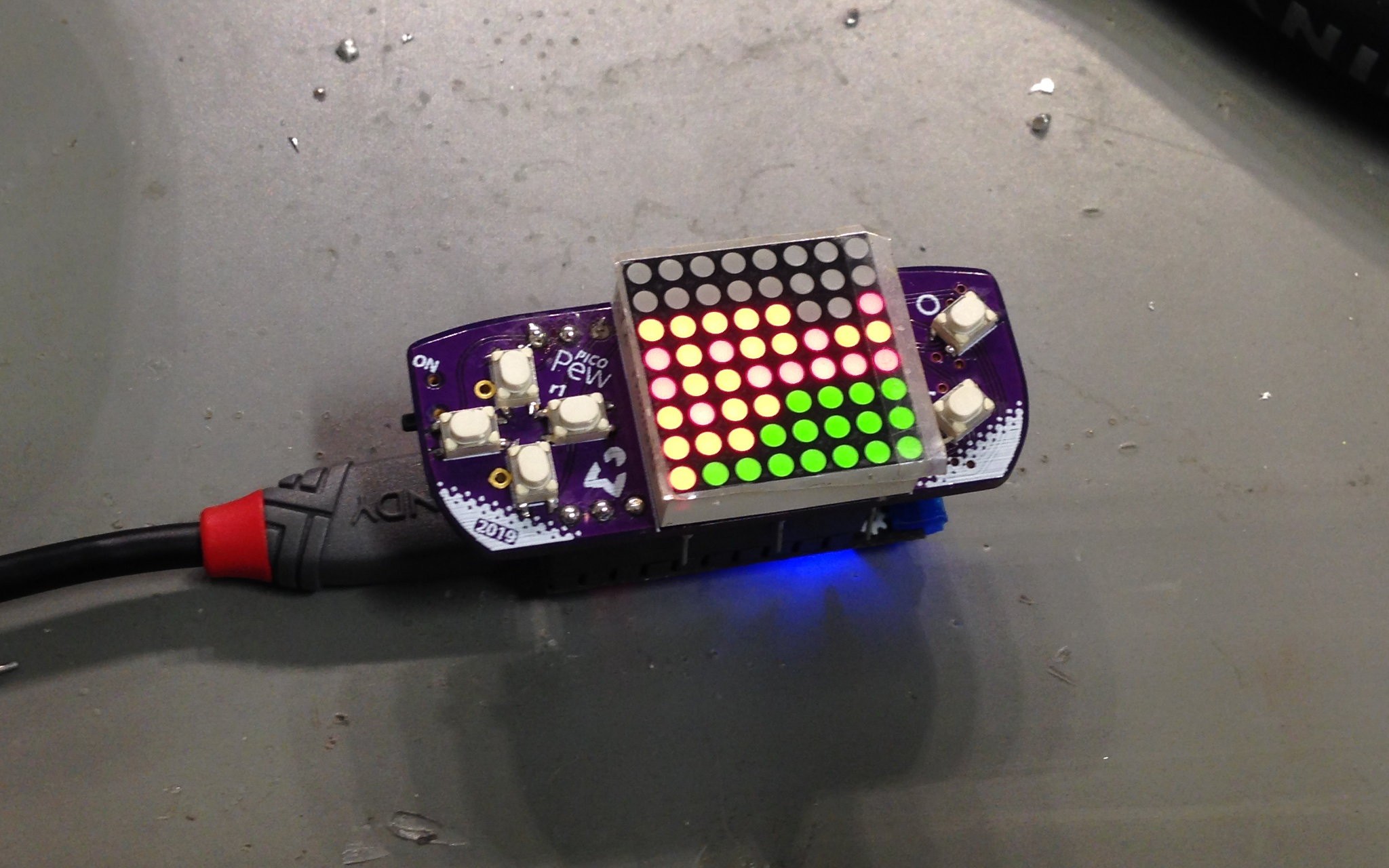I assembled the first PicoPew today, and it worked on the first try! That made me happy. The only thing that didn’t work right was that I had the X and O buttons swapped, which was a simple fix in the software since the GPIO assignment is arbitrary.

Soldering the 0.5 mm pitch eTQFP chip with a soldering iron and solder wire worked acceptably once I found the desoldering wick to remove excess solder stuck between the pins, even without additional flux (I thought there was a flux pen at the FabLab but there wasn’t). Still, for the next try I am going to buy solder paste and use the hot air rework station or ask colleagues to borrow a reflow hotplate or oven.
Soldering the buttons worked much better than I had feared, it was no problem at all to get them down without shorting the very close solder pads in the center of the d-pad.
The matrix with the bent pins worked acceptably too, but the outer holes are really close to the ones for the pin header and I accidentally filled two with solder while soldering the latter. Also, with the header covering about half of the holes, first inserting the matrix and then soldering it without leaving too large molten marks on the plastic was a challenge. I wonder if there is any way I can make this easier to assemble. I can probably move the holes 0.1–0.2 mm further out, that might help, even though it requires more bending.
What gave me most trouble was actually the female pin headers. Their pins just wouldn’t take on solder properly, even after scraping them with a knife and with sandpaper. They seem to make good enough mechanical and electrical contact now, but I’m a little suspicious. It occurs to me now I could have tried the stackable ones that came with the TinyPICO, maybe they would work better.
With the standard-height headers, the whole thing gets really thick, and there is space for more than two of the LiPo batteries inside. I should look for shorter headers, like the ones Adafruit sells for the Feather boards.
I still need to add the battery, and then I’ll play with it for a while to see if it’s comfortable to hold or anything else needs improvement. I suspect it will be less comfortable to hold than the PewPew Lite FeatherWing, which has a somewhat well-defined box shape because the Feather board has the same dimensions as the shield in front, whereas on the PicoPew there are many edges and protrusions on the back.
Other observations for revision 2:- The holes for the pin header and battery could be a bit larger, the header pins just barely fit, and when you accidentally fill a hole with solder, it’s very hard to get it open again with the suction pump and desoldering wick.
- The holes for the vias can be smaller, it looks like my specified diameter was rounded up to a larger drill bit, and there is now very little annular ring remaining. They are also larger than I have seen on other OSH Park boards.
 Christian Walther
Christian Walther
Discussions
Become a Hackaday.io Member
Create an account to leave a comment. Already have an account? Log In.
I have a whole bag (500 pcs) of the short headers, because that was the only way you could buy them. I can share some if you'd like. They are only 5 pins long, but you can always use several.
Are you sure? yes | no
5 pins would actually work pretty well, because I need 10 on each side – if they can be stacked lengthwise. The Adafruit ones are about 0.5 mm too wide for that, but that could probably be ground off. I’ll take a look around if I can find any 10-pin ones in more convenient quantities, but if not, I’d gladly take you up on that offer. Thanks!
Are you sure? yes | no
You will need to ground them a bit.
Are you sure? yes | no